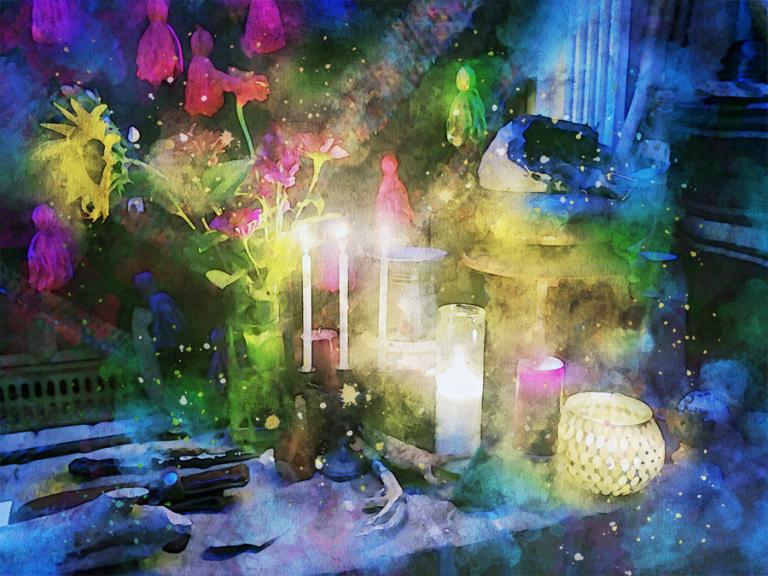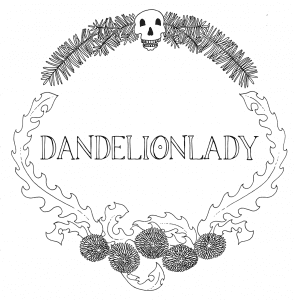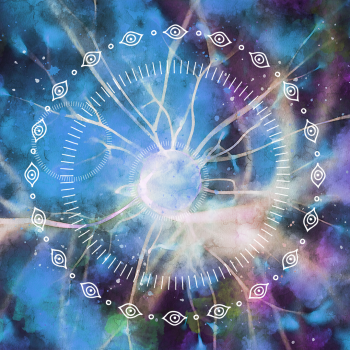Let’s talk about what exactly a devotional practice is and why it’s important. Merriam-Webster defines a devotional as “a short worship service”. I have to admit, as someone whose training is in Wicca and Druidry, that definition is a bit obscure to me. I Googled “worship service” just to see what our friends over at Merriam-Webster were even talking about. According to Wikipedia, a worship service is, “A church service is a formalized period of Christian communal worship”. So it just assumes that worship is Christian. Not cool, Wikipedia. If we just look for the definition of “devotion” we get a little closer with definitions that include religious worship or observance.
Still, that’s not quite what I was looking for and was needlessly Christian-centric. I continued onward with the question: what is a devotional practice? I know it when I see it. I’ve practiced various forms of devotional meditations and actions for decades now. Devotionals are often tied to deity in people’s minds and for good reason. We think of images of Christians kneeling in prayers, Buddhists sitting in contemplation, or Muslims kneeling toward Mecca. If we move toward the polytheistic end of the theological spectrum we find Bhakti. In Hinduism, Bhakti is a devotional and emotional relationship with a particular deity. Bhakti has the implication of: attachment, participation, fondness for, homage, faith, love, devotion, worship, purity.
In an animistic polytheistic worldview, there are “gods” everywhere just waiting for devotion and contemplation.

Here’s my definition of a Devotional Practice:
Devotional practice is a short ritualized action that an individual or group repeats on a regular basis in order to align themselves with a specific Spirit, Deity, Archetype, or spiritual Power. It can have words, but it doesn’t have to. It is any action that has ritualized intent and is meant to connect you to the Other.
You can create a devotional practice that is entirely atheistic, that connects you to natural phenomena like mountains or rivers, or to Jungian archetypes like the Mother or the Jester. You can also work devotionals in animistic, polytheistic, or henotheistic models. The point is to do things that connect, how you frame that connection is up to you. Personally, I work mostly within an animistic model with a nice helping of polytheism on the side.
Let’s break down how to build a devotional practice.
Who to Connect to with your Devotional Practice
I say Other with a capital “O” in my definition for a very specific reason. It was the best way I could think of to describe in English what I was trying to get at, a vast category of Beings of many kinds. In Celtic terms, you might call them the Dé and Andé: the gods and the not-gods. In the Potawatomi language, the list of beings that are animate is very long. The word yawe is “to be” an alive word that implies beingness and awareness. This word includes places like rivers, animals, fire, humans, and most everything except stuff that humans have made. Making it so humans are the only aware and truly alive beings is a choice based on language and culture. There are other choices.
I come from a perspective rooted in many sciences: Botany, Psychology, Ecology. I also have delved into a number of mythologies and cultures to try and understand the deep and ancient wisdom of those who came before us. From all that I have created three categories of Beings that I work with for devotional practice:
Beings that Were: which includes ancestors, the dead of other species, dead ideas, or even dead gods.
Beings that are Matter: and by that I mean those that have mass that literally are physically represented, this includes river spirits, mountain spirits, the spirit of a cat or a tree, as well as the indwelling spirit of humans and other animals.
Beings that are Not-matter: this would include beings that are forces, like the force of electricity, or concepts like liberty, or love, or transformation. I have a friend who works with the spirit of Possibility and has an entire devotional practice developed to work with Her. (Yes, my friend sees Possibility as a her.)
In many ways, I’ve simply avoided the deity question altogether, since the sun itself is often viewed as a deity in many pantheons, but would classify as a Being that is Matter. The challenge I see with this sort of classification system is that all things have a non-matter component, whether you define that as soul, or possibly as their quantum loops. However we humans need to be able to classify reality into smaller parts, so pick your system. You can think about these things the way I do, or just choose a god that calls to you from the ancient lore. It’s all up to you.
The most important part is to do it.

Methodologies of Devotional Practice
Here’s a short list of time-honored practices for connecting.
Prayer
Words are often the focus of devotionals, I have a morning and an evening song that I have memorized and sing, as well as a basic prayer that I use. I highly recommend spending the time to memorize set prayers. Simply by saying the thing over and over every day, you will eventually memorize it. Then it is with you always, and lives in your heart. The other day, one of my partner’s beloved dog passed. I was able to sing my evening prayer as we transported her body, and it was incredibly beautiful. In this way, memorizing words is not only a gift to yourself, but a gift to others.
Images
Mandalas or Icons are a powerful meditation and devotional focus, especially if you are a visual learner, they are an excellent way to connect. Finding the perfect art to represent the Being you’re drawn toward is a fantastic moment, but you can also create your own images and altars. I’ve used quilt blocks, embroidery, found objects arranged in a sacred formation such as a circle or a cross, and even drawn patterns in the soil or arranged leaves to create a visual altar to work with. Allow your eyes to move through the artwork, (yes, it’s artwork even if you made it out of sticks and mud) and let your mind settle into the focus of noting color and form. Try relaxing your eyes so that your vision is slightly unfocused, then moving your eyes back into focus again. While your eyes are unfocused, turn your attention inward. See if you can note how the image affects your body and mind.
Physical Symbols
Beads clicking through your fingers, the feel of a silken scarf draped over your head, the cool heaviness of a river stone in your palm, all these things evoke powerful reactions and symbolic meaning. Each one could be a devotional in its own right, honoring the spirit of the bead, the silk, or stone. But layers of meaning can build up, the stone that came from a river where you went as a child connecting you to your ancestors, or a stone from the headwaters of your local river connecting you to the river spirit, or a stone that reminds you of the night sky, or serenity, or is shaped like the moon for the Moon God. There are so many options to choose from and that’s just river stones.
Smoke or Flame
An essential symbol of light, heat, transformation, and life. You can light a candle, or incense or even use fire in its electrical form and turn on some twinkle lights. Life is essentially a fire of chemical transformation and containment. Each of us burns with the same fuel that a wood fire light up with. We breathe in oxygen and transport it throughout our bodies to create the chemical fire that keeps us moving. In cellular respiration oxygen is used to break the bonds of sugars stored in your body, just like oxygen breaks the carbon bonds in a wood fire, releasing light and heat. Light a flame to connect to your own inner aliveness, and watch the smoke to connect to the flow of air.
Movement
I highly encourage my clients to move. It doesn’t need to be fancy, or a yoga class, or a carefully memorized mudra, though it can be. I have found some of the most valuable movement practices are spontaneous and freeform. Just dancing to music you love can be a powerful act. Even more potent is dancing without music. Doing so forces you to note your own internal states and rhythms. Gentle stretches, hand movements, walking, or weight lifting can all be a devotional act if you use it as a moment of connection.
When do you do a devotional practice?
That’s up to your life and your schedule. I’ve worked with a lot of people in groves, circles, and workshops and each of them had different circumstances. Generally, in the morning before work, during lunch, or in the evening before cooking or before bed are the most common times. I recommend trying different times and seeing what works best for you. Experiment with your devotionals, and be gentle about expectations. Just do the thing, then do it again. Try adjusting the thing and seeing what happens. If you get stressed and don’t do it for a week, that’s cool. Try again. If you can, record your results. Keep a daily or weekly log of how things went in a planner, a document, a journal, or some kind of software. If you’re looking for practices that are a little more intense, you can check out this post.
Devotional practices are powerful. They help you focus on gratitude and beings other than yourself, which can make you happier. They help you build willpower and determination by practicing doing something everyday. They help you deepen your spiritual practice so that when you do your big high day rituals you’re prepped for connection.
References:
- Braiding Sweetgrass by Robin Wall Kimmerer
- The Spell of the Sensuous: Perception and Language in a More-Than-Human World by David Abram
- Ogam: Weaving Word Wisdom by Erynn Rowan Laurie
- The Artful Universe: An Introduction to the Vedic Religious Imagination by William K. Mahony
If you’d like to learn more about devotional practices and so much more, consider signing up for my Patreon. Thanks so much!













